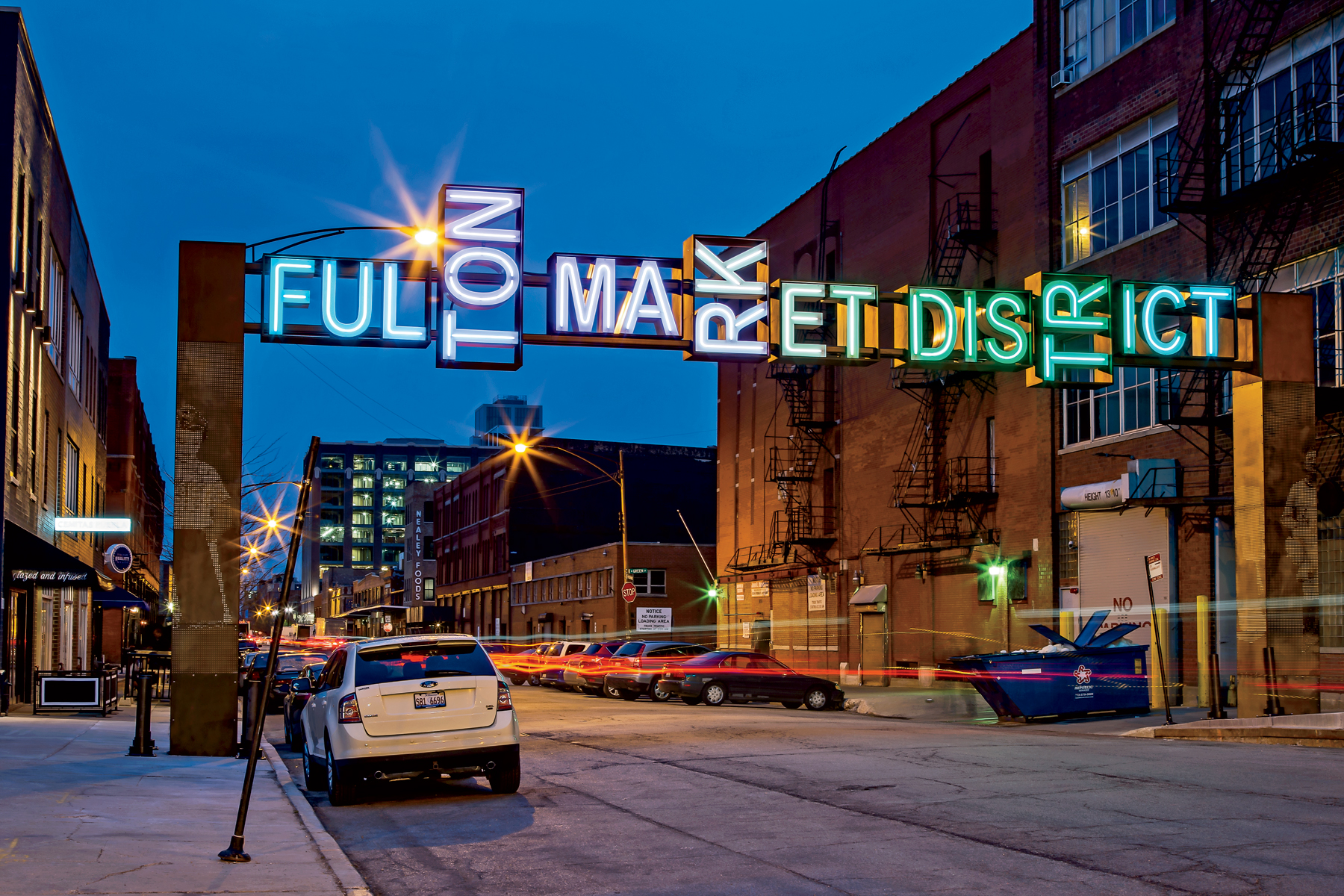The West Loop has long been synonymous with Chicago's avant-garde culture, especially the visual arts, which have benefited from the neighborhood's empty warehouses and historically cheap rents. But as Chicago reported in its February issue, the West Loop is quickly becoming one of the city's most desirable neighborhoods, with trendy new offices, high-end real estate, and incredible restaurants—and it's not without consequences for the artists and galleries that paved the way.
For starters, after 12 years as Chicago’s go-to for emerging artist exhibitions, Threewalls gallery has shuttered its home on Peoria Street, leaving a building that was once ground zero for the art scene in the West Loop. (Threewalls's management is currently looking for a temporary home further west.) Around the corner from Threewalls on Washington Boulevard, three galleries plan to relocate: Western Exhibitions, Document, and Volume Gallery will move to West Town in September, while the project space Paris London Hong Kong will close. These four galleries were once the core tenants of the turquoise-tiled Checker Taxi building, which will house a Latin restaurant and bar by restaurateur John Manion later this year. (Nearby experimental theater group Redmoon also recently closed its doors, citing more than $60,000 in unpaid rent as one of the reasons for the company's bankruptcy.)
All four galleries have pointed to rising West Loop rents—many say leases have quadrupled—as part of the reason for their migration west, an area already staked out by big-name galleries such as Corbett vs. Dempsey and Monique Meloche. As one gallery director admitted to me anonymously, for the arts, “The West Loop is dead.”
Across the street from Google’s behemoth office tower, the Chicago Artist Coalition, a 30-year-old arts incubator, is managing to stay put. But how? Executive director Caroline Older credits her “art-centric landlord,” former gallerist and photographer Susan Aurinko. Older and Aurinko recently made a “below-market value” deal on the 8,000-square-foot gallery and artist studios on Carpenter Street that will enable the CAC to remain in its home for another few years. But Older says she is actively looking to relocate—hopefully near other arts organizations.
Jeffrey Shapack, one of the real estate developers responsible for the area’s fast growth, sits on the board of the Chicago Artists Coalition. “It is ironic that I am on the board of CAC and our development efforts in Fulton Market have unfortunately increased the rents in the neighborhood,” he says. “It’s a catch-22. However, my hope is to leverage our relationships to raise money for CAC.”
Shapack says he is actively raising awareness about the need for arts and culture to coexist with food and beverage venues: “We came over here because of the arts. The last thing we want to do is lose it.”
Gallerist Jefferson Goddard agrees. “The people who come to the West Loop for $15 cocktails should also see some art,” says Goddard, founder of Aspect/Ratio, a gallery dedicated to the art of the moving image, and the last art gallery in the former Threewalls building on Peoria Street.
Just up the street from the Chicago Artists Coalition, Shapack is building a new high-rise on the corner of Halsted and Lake. Right before Shapack bulldozed the former structure on that site, he commissioned street artist Don’t Fret to paint a 150-foot-long mural. The artist decided to create an homage to the area’s former meatpacking days, as reported in Chicago's July 2014 artist profile. Shapack says he’s saved Don’t Fret’s murals and plans to permanently install them within each of the thirty elevator lobbies inside the new building.
In another ironic twist, the West Loop’s first hotel, Soho House (which Shapack also developed), opened in the summer of 2014 with a mission to serve Chicago’s “creative industries.” But the private club has not lived up to its promise as a home-away-from-home for artists. While the international hotel brand has been successful in welcoming “creatives” in London and New York, a guest at Soho House Chicago is more likely to bump into basketball players and advertising junior execs than artists and art curators.
But it's not for lack of trying. When Soho House first opened, the boutique space filled its in-house art gallery with a large collection of Chicago artists, each of whom traded their work for one- or two-year memberships that included access to the gym, bars, and rooftop pool.
Of the dozens of artists and gallerists I informally interviewed for this article, not one plans to renew their $2,000 membership. Some have called the Soho House too elitist and devoid of artists. “I will not be re-upping my membership,” said one dealer who preferred to remain anonymous. “Soho House underestimated how the actual artists in this town can’t afford the membership, so the space is not useful for deals or meetings.” Soho House declined to comment.
Among those who have stayed put on Fulton Market is Mars Gallery, open since 1988 and one of the longest-running galleries in the West Loop. “Thirty years ago the West Loop was an overlooked gem,” says Peter Mars, the gallery's founder. “It was an adventure. We weren’t afraid to go into some weird neighborhood and treasure hunt for art."
Over time, Mars watched as blue chip galleries moved to places such as West Town, and Motor Row in the South Loop. He himself found a way to keep his doors open by adding a framing shop and café to his space. It's an unusual but profitable business plan for an art gallery, and one that Mars says reflects his community's tenacity. No matter how the landscape changes, the arts endure. Because, as Mars puts it, "We’re survivors.”



